In addition to the cost of electricity supply (kWh times all components of energy rate), ComEd commercial customers in Illinois pay a “demand charge”. Demand meters register the highest rate of electrical flow (or current) during a billing period. The meter records an average flow for every 15-minute interval. The customer is billed for the highest average 15-minute flow during the billing period. The measurement unit is kW. This charge is found under the delivery section on your ComEd bill.
Utility companies need to make sure that they can provide the maximum amount of electricity that you might need at any point during any day during the billing cycle. If you need 100kW once during the cycle they have to be prepared to supply that amount whenever you might need (demand) it. If you consistently use energy at or close to your demand spikes throughout the billing cycle your energy cost will tend to be the larger portion of your bill. If, however, your business tends to use significant power in short bursts, the demand charges will be a significantly larger portion of your overall bill. You pay more (proportionally) as a result of your usage spikes.
Let’s take a look at a few examples (prices and numbers are not actual).
Business A
- Consistently uses 50kW (peak demand) over 720-hour month (30 days)
- Energy use = 36000 kWh (50kW x 720 hours)
- If their energy cost is 8 ₵ per kWh (.08) they will pay $2880 in energy costs
- If the delivery company charges $6.70 /Kw demand this would be a $335 charge on the bill. On the ComEd bill this is called the Distribution Facilities Charge: The charge to recover costs to install and maintain the electric delivery system. It is a per kilowatt (kW) charge multiplied by the Maximum Kilowatts Delivered (MKD) (https://www.comed.com/SiteCollectionDocuments/nonresidential_summary_typical_charges.pdf)
- Demand as a % of supply cost: 11.6%
- Cost per kWh both supply and peak demand: 8.93₵ per kWh ($3215/36000)

Business B
- Has a usage of 10kW (for 719 hours). They do use 50kW one hour per month.
- Energy use = 7240 kWh ([719 hours x 10] + [1 hour x 50])
- If their energy cost is 8 ₵ per kWh (.08) they will pay $579.20 in energy costs
- If the delivery company charges $6.70 /Kw demand this would be a $335 charge on the bill.
- Demand as a % of supply cost: 57.8%
- Cost per kWh both supply and peak demand: 12.63₵ per kWh ($914.20/7240)

Even though Business B only needs the peak power for an extremely short period of time it has the same demand charge as Business A. The impact of the demand charge is much greater on Business B. Controlling demand charges can have significant financial benefits.

What are some ways that your business could reduce demand? The fastest and most inexpensive way to reduce demand is to be mindful of usage. Consumption and demand often go hand in hand.
- Install energy efficient equipment.
- Downsize equipment to fit the job. Equipment that is larger than it needs to be will unnecessarily increase peak demand
- Shift the most energy intensive activities to lower load times of the day if possible. That way you can even out usage and minimize spikes in demand
- Turn lights off when possible
- Reduce lighting in areas that have natural light. Use light color paints to help reflect light
- When replacing bulbs or fixtures consider newer more efficient options (LED)
- Set thermostats lower during the winter heating season and maintain higher setting for air conditioning during the summer cooling season
- Eliminate heating and air-conditioning from vestibules. The airlock effect within the vestibule will probably be sufficient.
- During periods when the building is unoccupied (nights and weekends) reduce thermostat settings for heating and increase setting for air conditioning. Investigate programmable smart thermostats that can be adjusted remotely.
- Cut water heating costs where possible by reducing the temperature of hot water.
- Caulk and seal. Check insulation levels and install or upgrade where practical.
- For maximum comfort keep humidity levels between 40% and 60%
Electric Solar Gas
Independent Energy Broker

All rights reserved.